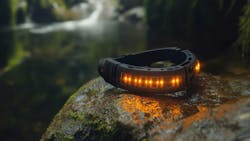From Nanogenerators to WPT: More Tantalizing High-Density Apps (Download)
Believe it or not, runners will soon be able to harvest energy via wearable technology, thanks to nanotechnology developed by the University of Surrey Advanced Technology Institute (ATI) in the UK.
When venturing out in the early morning for your daily run, you will soon be able to harvest plenty of energy for your wearable devices because of nanotechnology. Highly energy-efficient and uniquely flexible nanogenerators will be able to drive a 140X increase in power density when compared to conventional nanogenerators.
ATI researchers are betting on this development, which could lead the way for nano-devices that will be at least as efficient as most modern solar cells.
